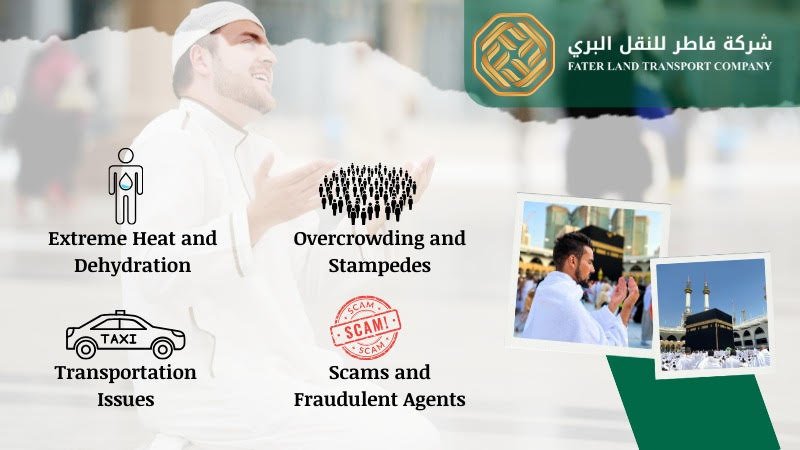The Hajj pilgrimage is a spiritual experience, a one-time requirement for Muslims who are physically and financially capable. But aside from its religious essence, the pilgrimage offers many issues that challenge the pilgrims’ endurance, patience, and spirituality. Based on real sources and first-hand testimonies, below are 15 of the key issues encountered by pilgrims in Hajj:
List of Challenges & Problems Faced During Hajj by Hajis or Pilgrims

1. Extreme Heat and Dehydration
The scorching temperatures in Mecca, often exceeding 50°C (122°F), pose severe risks. In June 2024, over 1,300 pilgrims died due to heat-related illnesses during Hajj. Staying hydrated and seeking shade are crucial to prevent heatstroke and dehydration.
2. Overcrowding and Stampedes
With millions gathering in a small space, there is bound to be overcrowding. The 2015 Mina stampede led to the deaths of over 2,000 individuals. Crowds should be managed properly, and there should be following rules to guarantee safety.
3. Physical Fatigue
The rituals are long and require a lot of walking and standing, which can cause exhaustion. Old pilgrims or those with ailments usually find the physical load too much. Getting proper rest, and even regular medical check-ups, is advised.
4. Transportation Issues
Traveling between sacred places can be tiresome. Pilgrims are reported to walk for hours because of poor transport, adding to fatigue. Planning and patience are essential.
5. Shortage of Accommodation
Sufficient accommodation at proximity to holy sites is rare. Pilgrims rest in crowded tents or outdoors, paying with sleep and cleanliness.
6. Health Hazards and Outbreaks of Disease
The crowding raises the risk of contagious diseases. History has seen Hajj outbreaks in the past, such as respiratory infections. Hygiene and immunization are critical.
7. Language Barriers
Pilgrims coming from different backgrounds might have difficulties communicating, and there could be misunderstandings as well as a problem in obtaining help. Taking basic Arabic words or using apps for translation might be helpful.
8. Financial Strain
The expense of Hajj can be high. Unexpected charges and excessive charges by some agencies contribute to the cost. Budgeting and selecting credible service providers are imperative.
9. Scams and Fraudulent Agents
Unscrupulous agents take advantage of pilgrims by providing fictitious packages or excessive charges. Caution in due diligence and verifying credentials prevents such a nightmare.
10. Emotional and Mental Stress
The physical stress of walking, new environments, and spiritual demands can cause emotional stress. Mental preparation and camaraderie with fellow pilgrims can help minimize anxiety .
11. Theft of Personal Belongings
Thievery or loss in crowded areas is prevalent. Valuables should be kept out of sight, and essentials carried in a waist pack.
12. Restricted Access to Clean Facilities
Overcrowding means there are long waiting lines for ablution rooms and restrooms, occasionally at the cost of hygiene. Personal hygiene is hard to maintain.
13. Navigational Difficulties
The sheer size of the holy places can be confusing. Pilgrims will get lost easily, and hence there is a state of panic and delays. It is advisable to use maps and stick to groups.
14. Cultural and Behavioral Differences
Varied behavior and customs can cause miscommunication or conflicts between pilgrims. Patience and tolerance are essential.
15. Delayed Emergency Response
During emergencies, the large number of individuals can cause delays in medical or security response. Familiarity with emergency procedures and aid station locations is crucial.
Despite these difficulties, the Hajj is still a transformative experience, reflecting the spirit of submission, oneness, and devotion. With adequate preparation, knowledge, and resilience, pilgrims can overcome these challenges and complete their religious duties.

